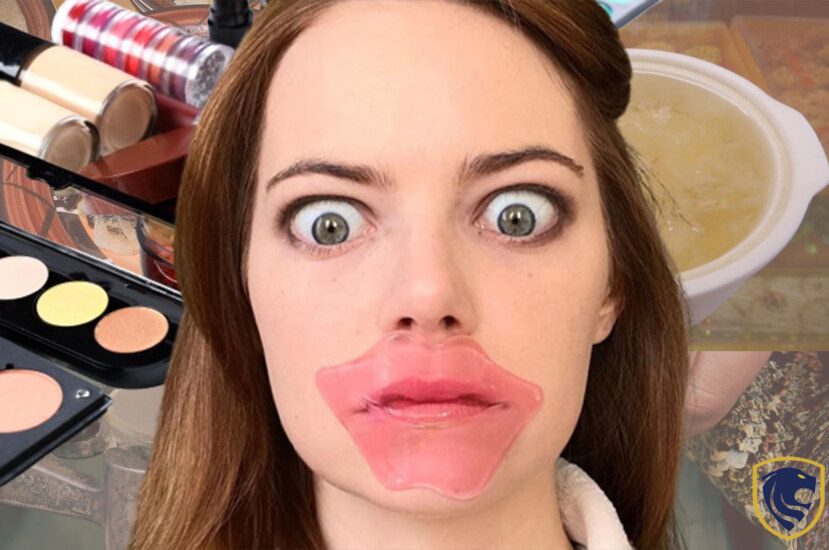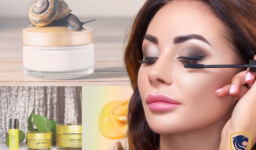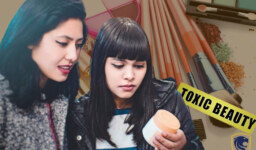Numerous strange and unusual chemicals continue to fascinate and confound customers in the broad field of Beauty Products. These unusual ingredients frequently claim amazing skincare and anti-aging advantages, whether they come from animals, precious metals, or even the human body. Others continue to be cloaked in dispute and skepticism, while some are supported by scientific study and decades of traditional use. The appeal of these unusual chemicals in skincare and cosmetics shows consumers’ ever-evolving desire for beauty and their openness to trying the unusual in search of a radiant and young appearance. However, as the beauty industry forges ahead into the unknown waters of skincare and cosmetic innovation, it’s crucial to approach these unconventional chemicals with a critical eye, considering safety, ethics, and scientific legitimacy.
Snake venom
Snake venom has made its way into the spotlight as a distinctive and perhaps odd component in the world of Beauty Products. That’s right, you read that right: snake venom. It is said that snake venom can have similar skin effects to Botox. It may help to temporarily relax the muscles in the face, which might lessen the visibility of wrinkles and fine lines. The majority of cosmetics are made of synthetic snake venom, which mimics the effects of real snake venom. This guarantees that safety and moral issues are taken into account. It’s important to use caution even if the thought of using snake venom in cosmetic products may seem appealing. Those who are allergic to snake venom should avoid using these items, and caution should be used when using them.

Snake venom in beauty products
There are concerns regarding regulation, safety, and research around the use of snake venom in cosmetics. Such products’ effectiveness and long-term consequences are still up for dispute. Numerous alternative skincare components have been thoroughly studied and shown to offer comparable anti-aging effects without the possible hazards connected with snake venom. Snake venom is surely an unusual ingredient to use in cosmetic treatments. When experimenting with such unusual chemicals in your skincare routine, it’s important to consider safety and ethical considerations, even though they could provide transient advantages. Before attempting to use any product containing snake venom or comparable chemicals, always conduct extensive research and speak with a dermatologist.
Donkey milk
Donkey milk is an odd yet interesting component in the realm of beauty products. The use of donkey milk in cosmetics by ancient civilizations like the Egyptians and Greeks is significant in terms of history. The proponents of this milk contain high vitamin, mineral, and protein content. Those can moisturize the skin, increase suppleness, and lessen the indications of aging. Due to its mild and soothing qualities, donkey milk is frequently touted as being ideal for delicate skin. The use of donkey milk in cosmetics raises concerns regarding ethical agricultural practices and environmental sustainability. Because donkeys must be milked to get this component. Although most people believe donkey milk to be harmless, certain people may have allergies or sensitivities. When experimenting with new products, always run a patch test.

Donkey milk
There are many more well-researched components with proven skincare benefits. You can use them if the notion of using donkey milk in your skincare doesn’t appeal to you. Although using donkey milk in cosmetics may seem out of the ordinary, it has a long history and may have positive effects on the skin.
Whale vomit (Ambergris)
Ambergris is a very uncommon component found in beauty products. It is derived from an even weirder source. The sperm whale’s digestive tract. To stabilize and improve the aroma of perfumes, ambergris is usually employed as a fixative in perfumes. Ambergris is frequently referred to as “floating gold” due to its scarcity and great value in the perfume business. Ambergris is a desirable component of expensive fragrances. Because it is thought to help aromas remain longer on the skin. Because ambergris comes from an endangered sperm whale, its usage in cosmetics poses ethical and environmental questions. Sustainable alternatives are being investigated, and its trade has been outlawed in several nations.

Whale vomit (Ambergris) in beauty products
Genuine ambergris is extremely expensive due to its rarity, leading to synthetic alternatives development. Please keep in mind that skin responses might happen if you use products that include ambergris. Patch testing should always be done, especially if you have sensitive skin. Despite its strange appearance, ambergris has a lengthy history in the world of fragrances. Despite being uncommon and frequently contentious, its usage in cosmetics continues to be a source of fascination and discussion within the beauty industry.
Human stem cells
Human stem cells are among the most contentious and odd components used in the constantly changing world of beauty products. Because of their capacity for regeneration, human stem cells are highly sought after. Theoretically, they might aid in restoring damaged skin, increasing collagen formation, and encouraging a young complexion. There are considerable ethical concerns with the usage of human stem cells in cosmetics. These cells are often sourced from human tissues or fluids, including umbilical cord blood or foreskin, which poses ethical and moral quandaries.

Human stem cells
Many experts are still dubious about the real efficacy of using human stem cells in skincare products, despite the potential advantages some cosmetic businesses have stated. Part of the skepticism about stems is about whether these cells can permeate the skin and yield significant outcomes. The use of human-derived stem cells in cosmetics is strictly controlled in many nations. The strict monitoring strives to guarantee safe product procurement and production. Human stem cell-based products frequently have high price tags. This illustrates how intricately they are sourced, processed, and potentially ethical.
For their anti-aging and regenerative effects, several alternative components, including peptides, hyaluronic acid, and retinoids, are widely known in the skincare industry. These alternatives could offer comparable advantages without the scientific and ethical debates surrounding human stem cells. Although using human stem cells in beauty products is regarded as a cutting-edge breakthrough, the beauty industry still has reservations about them. If you’re interested in these items, make sure to conduct an extensive study and think about the moral consequences. A dermatologist should always be consulted before making any skincare decisions. Especially when navigating the novel world of skincare utilizing human stem cells.
Radioactive elements
Some cosmetics in the past had radioactive ingredients. This is an odd and unpleasant chapter in the history of beauty products. It was claimed that these radioactive substances had rejuvenating and complexion-improving properties. Radium and thorium were the preferred radioactive elements in cosmetics around the turn of the 20th century. Some goods, like toothpaste with thorium infusion and radium face lotions, made the promise to improve appearance. The “Radium Ore Revigator,” a radium-lined jar that was advertised as a technique to “radiate” and cleanse drinking water, is one notorious instance. The usage of radioactive ingredients in cosmetics produced negative health effects. Many users contracted radiation sickness, suffered deformities, and many passed away.

Radioactive elements in beauty products
Governments began restricting and ultimately outlawing the use of radioactive materials in consumer goods as the risks became clear. Today, it is strictly forbidden to utilize radioactive components in cosmetics. Also, severe safety regulations are in place. The age of radioactive cosmetics serves as a clear warning about the value of product safety and the dangers of using untested or harmful components. It serves as a warning about the importance of strict regulation and testing in the cosmetics sector.




